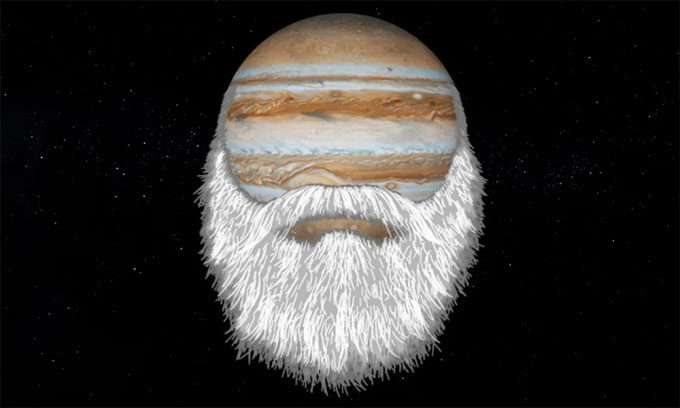While Jupiter is the oldest planet, determining which planet is the youngest is much more challenging.

Jupiter is the oldest planet in the Solar System. (Image: Hakan Akirmak Visuals/Artem Musaev/IFLScience)
About 5 billion years ago, the Sun began converting hydrogen into helium in its core to become a true star. Surrounding the “newborn” Sun was a disk of material—primarily hydrogen from the nebula that formed the Sun, along with more complex molecules. Interactions within this disk created ice and dust particles, which continued to grow and interact with other particles. Clumps of gas from the material disk also began to detach from the rest. From this chaotic environment, planets gradually formed.
The Oldest Planet
The earliest planet to form, possibly within the first 3 million years of the Solar System, is Jupiter. This makes Jupiter formidable and massive, much larger than any other planet. Jupiter has a mass 318 times that of Earth. In fact, the barycenter of the celestial system between Jupiter and the Sun—the point around which Jupiter orbits—is not at the center of the Sun but just outside its surface. Thus, Jupiter does not orbit the Sun in a precise manner.
After Jupiter, Saturn also began to develop. Next came Neptune and Uranus, although by the time these two planets were forming, Jupiter and Saturn had already swept up a large amount of gas from the outer regions of the Solar System. Among the moons in the Solar System, Jupiter’s moon Callisto has the oldest surface.
During this time, in the inner regions of the Solar System, four terrestrial planets and one dwarf planet gradually formed. The rocky protoplanets took longer to come into existence, likely around 100 million years, as they depended on collisions between rocky celestial bodies. Mars may have reached its current size quickly, faster than Earth and Venus, but scientists are unsure of the exact timing. Typically, they estimate the age of solid celestial bodies based on the number of craters on their surfaces, but those with changing surfaces complicate this task.

Earth (left) and Uranus (right) may be the youngest planets. (Image: Wikimedia).
The Youngest Planet
While it may be possible to identify Jupiter as the oldest planet based on models of formation processes, determining the youngest planet is not straightforward. Another aspect to consider is that planets need to have mass and characteristics similar to what we observe today. If so, the title of the youngest planet is a competition between Earth and Uranus. The reason these two planets are candidates for the title of youngest is related to the fact that they both experienced significant collisions.
Primitive Earth likely collided with Theia, a large planet roughly the size of Mars. The Moon likely also formed from this event that occurred about 4.5 billion years ago. The Moon took about 200 million years to solidify. Earth underwent disturbances that would require additional time to become as it is today, with the formation of oceans and tectonic plates. Tectonic plates could have begun forming as early as 3.6 billion years ago.
About 3 to 4 billion years ago, Uranus also collided with a celestial body the size of Earth, disrupting its internal structure. This event caused Uranus to tilt on its axis and have a peculiar magnetic field. Due to both Earth and Uranus experiencing such structural-altering events, determining which planet is younger remains a puzzling issue.


















































